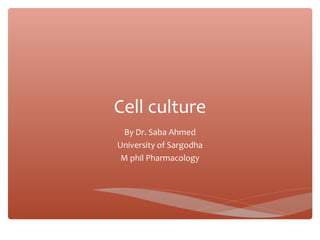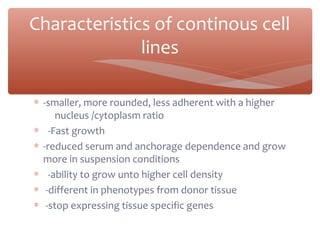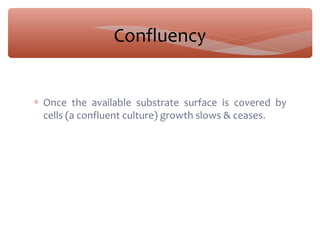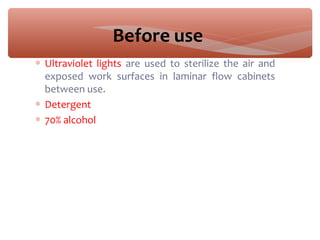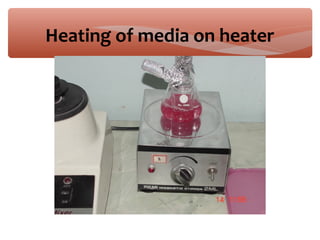Cell culture is the process of growing cells under controlled conditions outside of their natural environment. Key developments in cell culture technology include the use of antibiotics to prevent contamination, trypsin to detach adherent cells for subculturing, and chemically defined culture media. Cell culture is used in a variety of areas including basic research, toxicity testing, cancer research, virology, genetic engineering, and gene therapy. Successful cryopreservation of cell lines involves slow freezing and quick thawing to minimize ice crystal formation and damage to cells.
